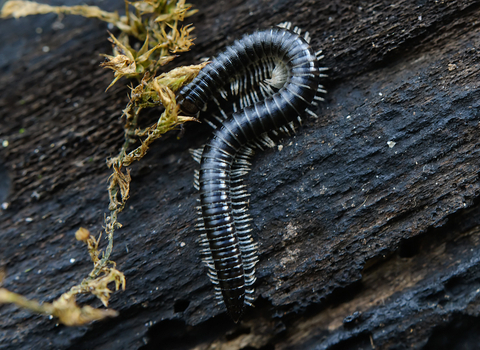
White-legged Snake Millipede ©northeastwildlife.co.uk
White-legged snake millipede
Found in compost heaps and under stones in gardens, the White-legged snake millipede is a common minibeast. Despite its name, it has about 100 legs. It is an important recycler of nutrients, feeding on decaying matter.
Enw gwyddonol
Tachypodoiulus nigerPryd i'w gweld
January to DecemberGwybodaeth am rywogaethau
Categori
Ystadegau
Length: up to 6cmCommon.
